
The No. 2 Construction Battalion, Canadian Expeditionary Force (CEF), was raised in Nova Scotia and was one of two predominantly Black battalions in Canadian military history and the only Canadian battalion composed of Black soldiers to serve in World War I. Commanded by Lieutenant Colonel Daniel Hugh Sutherland, formerly of the 193rd Battalion, CEF.

The Royal Canadian Regiment (RCR) is an infantry regiment of the Canadian Army. The regiment consists of four battalions, three in the Regular Force and one in the primary reserve. The RCR is ranked first in the order of precedence amongst Canadian Army infantry regiments, but in a quirk of the rules of seniority, its 4th battalion is ninth.

The Canadian Grenadier Guards (CGG) is a reserve infantry regiment in the 34 Canadian Brigade Group, 2nd Canadian Division, of the Canadian Army. The regiment is the oldest and second-most-senior infantry regiment in the Primary Reserve of the Canadian Army. Located in Montreal, its main role is the provision of combat-ready light infantry troops in support of Canadian regular infantry. It is a Household Foot Guard regiment and also provides soldiers for public ceremonial duties, performing similar ceremonial duties as the Guards regiments of the British Army. This primarily entails mounting the guard at Government House, the King's and Governor General's residence, and performing the "Changing the Guard" ceremony on Parliament Hill in Ottawa, a task it shares with Canada's senior Household Foot Guard regiment, the Governor General's Foot Guards of Ottawa. The Canadian Grenadier Guards is an allied regiment to the British Grenadier Guards.
The Canadian Expeditionary Force (CEF) was the expeditionary field force of Canada during the First World War. It was formed following Britain’s declaration of war on the German Empire on 15 August 1914, with an initial strength of one infantry division. The division subsequently fought at Ypres on the Western Front, with a newly raised second division reinforcing the committed units to form the Canadian Corps. The CEF and corps was eventually expanded to four infantry divisions, which were all committed to the fighting in France and Belgium along the Western Front. A fifth division was partially raised in 1917, but was broken up in 1918 and used as reinforcements following heavy casualties.

The Royal Hamilton Light Infantry (Wentworth Regiment) (RHLI) is a Primary Reserve infantry regiment of the Canadian Army, based at John Weir Foote VC Armoury in Hamilton, Ontario. The RHLI is part of 31 Canadian Brigade Group, which is part of 4th Canadian Division.

The Nova Scotia Highlanders is an infantry regiment in the primary reserve of the Canadian Army. It is part of 36 Canadian Brigade Group, 5th Canadian Division.
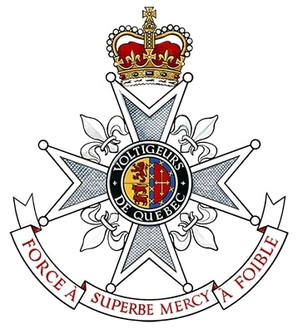
Les Voltigeurs de Québec is a Primary Reserve infantry regiment of the Canadian Forces. It is at the Quebec City Armoury in Quebec City, Quebec, Canada. The name of the regiment commemorates another older French-speaking Canadian militia light infantry unit, the Canadian Voltigeurs. The founder of the Canadian Voltigeurs, Lieutenant-Colonel Charles-Michel d'Irumberry de Salaberry, was the father of the two men who raised Les Voltigeurs de Québec. The regiment was formed in March 1862, with its headquarters in Quebec City, by the amalgamation into a regiment of eight independent volunteer militia rifle companies. The first of these companies was originally raised in December 1861. Between 1862 and 1867 these companies were frequently disbanded, reformed and renumbered. In 1942 it provided an armoured regiment.
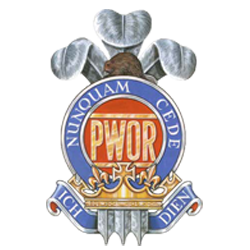
The Princess of Wales' Own Regiment (PWOR) is a Primary Reserve infantry regiment of the Canadian Army.
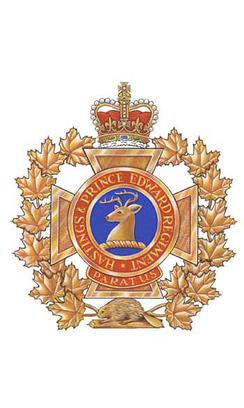
The Hastings and Prince Edward Regiment is a Primary Reserve infantry regiment of the Canadian Army. The regiment is part of 33 Canadian Brigade Group, one of four brigade groups of 4th Canadian Division. The regimental headquarters and one company are at 187 Pinnacle Street in Belleville and on Willmott Street in Cobourg, with another rifle company in Peterborough. The Peterborough Armoury houses what was traditionally B Company or Moro Company. Moro Company also serves as the headquarters for the regiment’s Assault Pioneer Platoon. Normally, the regiment deploys as a composite, Ortona Company, while the headquarters and administration form Somme Company.
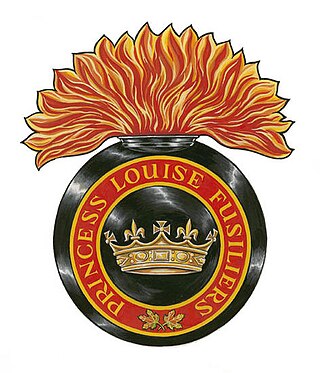
The Princess Louise Fusiliers is a Primary Reserve light infantry regiment of the Canadian Armed Forces. Formed as 66th The Halifax Battalion of Infantry and then named 66th Battalion after Princess Louise in 1879, it took its present name in May 1920. The 6th Machine Gun Battalion, CMGC amalgamated with the regiment in 1936

The West Nova Scotia Regiment is a line infantry regiment of the Canadian Army, part of the Primary Reserve, and is part of the 5th Canadian Division's 36 Canadian Brigade Group. The regiment recruits volunteers from the South-Western part of the province of Nova Scotia and has its headquarters at LFAATC Aldershot, near the community of Aldershot, Nova Scotia.
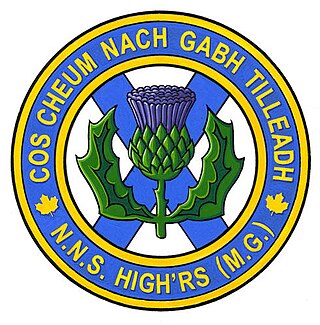
The North Nova Scotia Highlanders was an infantry regiment of the Canadian Army founded in 1936. In 1954, it was amalgamated with The Pictou Highlanders and 189 LAA RCA Battery to form 1st Battalion, The Nova Scotia Highlanders (North).
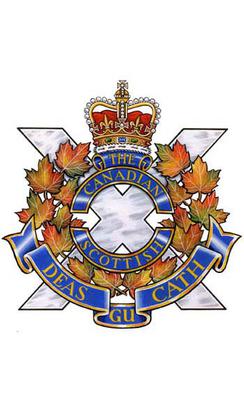
The Canadian Scottish Regiment (Princess Mary's) is a Primary Reserve infantry regiment of the Canadian Army based on Vancouver Island in British Columbia.
The 185th Battalion, CEF was a unit in the Canadian Expeditionary Force during the First World War.

The 87th Battalion, CEF was a Household Foot Guards infantry unit in the Canadian Expeditionary Force during the First World War.

The Victoria Rifles of Canada was an infantry regiment of the Non-Permanent Active Militia of the Canadian Militia and later the Canadian Army. First formed in Montreal, Quebec in 1862, the regiment would see a history of service stretching from the Fenian Raids of the 1860s-70s right into the middle of the 20th Century. In 1965, the regiment was reduced to nil strength and transferred to the Supplementary Order of Battle.

Jeremiah Alvin Jones was a Black Canadian soldier who served in World War I. He was recommended for a Distinguished Conduct Medal but there is no record of him having received it. His treatment has been seen as an example of the lack of recognition accorded to Black Canadian soldiers. Campaigns to have him receive the medal posthumously eventually resulted in his being awarded the Canadian Forces Medallion for Distinguished Service on February 22, 2010.

The 25th Battalion, CEF was a unit in the Canadian Expeditionary Force during the Great War. It was the second infantry battalion of ten to be raised in Nova Scotia during the war. The 25th served in Belgium and France as part of the 5th Canadian Brigade, 2nd Canadian Division from 16 September 1915 until the end of the war. Regimental headquarters were established at the Halifax Armouries, with recruitment offices in Sydney, Amherst, New Glasgow, Truro and Yarmouth. Of the 1000 Nova Scotians that started with the battalion, after the first year of fighting, 100 were left in the battalion, while 900 men were killed, taken prisoner, missing or injured.
The 17th Battalion, CEF was a battalion of the Canadian Expeditionary Force during the Great War.
The Colchester and Hants Regiment was an infantry regiment of the Non-Permanent Active Militia of the Canadian Militia. In 1936, it was amalgamated with The Cumberland Highlanders to create The North Nova Scotia Highlanders.















